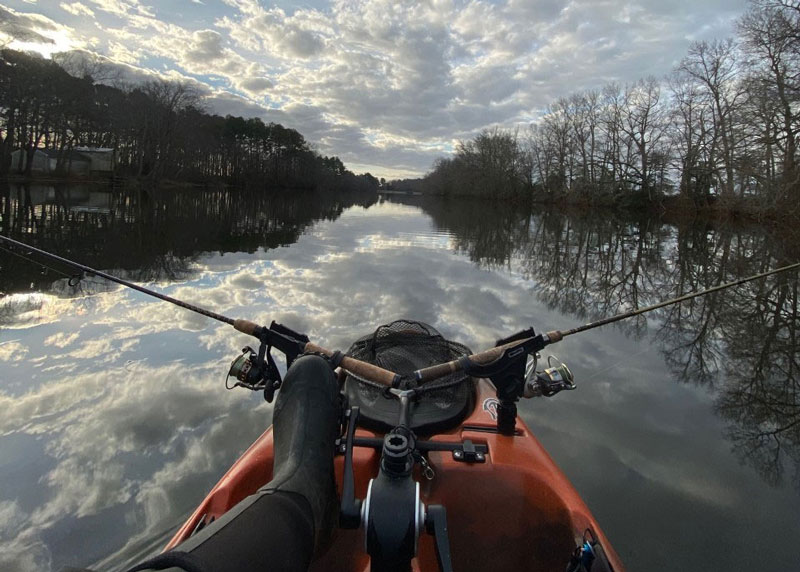To the human eye, many areas look like good habitat for the fish. But fish are pickier. Typically, they inhabit only a small fraction of the available shorelines. There are things about those small sections that appeal to the fish. Determining which sections in a tributary creek or pond are productive and which are not takes a lot of trial and error and time on the water.

Knowing the slope of the bottom near the shoreline is important in figuring out where to fish. If the bottom is fairly shallow for a distance from the shore, then begins sloping down, this drop-off can be a good spot for targeting fish. The habitats that offer good conditions for fish usually contain some type of structure where they can wait to ambush prey that comes along. One of the best examples of prime habitat is fallen trees and branches that are covered with water. If you can get out on a low-water day, you can scout around to see what type of wood is under the water at normal levels. Other examples of good habitat are rock riprap structures, dock pilings, bulkheads, or other non-natural structures in the water. But remember that when new riprap, docks, or bulkheads are installed, they are not initially good fish-holding locations. It often takes several years for a productive microcosm of the food chain to grow there. Until those organisms in the food chain are established, the targeted game fish are less likely to be there.
If I could give out just one tip for perch fishing in creeks and ponds during the warm months it would be to fish in shaded areas. These areas could be the side of a water body that is naturally shaded by trees and the angle of the sun. Or they could be manmade structures that create a patch of shade such as under docks, inside boat houses, or under bridges. Most of my Severn River trips during warm months are made during the morning typically in the range of 7 a.m. to 11 a.m. The sun is fully or partially blocked by the trees and slopes on the southern shorelines, so this is where I’ll start.
In cold weather, such as when fishing for pickerel, the opposite can be true. When the water is cold the bait as well as the pickerel are sluggish, but by fishing on the northern shoreline that has received the morning sun, you can find slightly warmer water. Shallow areas with dark bottoms (typically mud) will warm up faster and are good spots to try on cold days.
If you are on the water following a storm, look for areas that are relatively cleaner and less turbid. If the entire area has low water clarity, you may have better success by using lures that throw off vibrations so the fish can sense the lure is nearby. Using a scented bait (either a live bait or a product like Gulp! or Fishbites) can also help the fish find your offering.
During some times of the year you may observe algal blooms, as I have in the Severn’s waters. They are quite obvious and change the color of the water to brown or reddish brown. On occasion, you can observe a sharp boundary between water affected by the algae and unaffected areas. Fishing is rarely good in water impacted by algal blooms—when you encounter one it makes more sense to relocate to some other spot.
Excerpted from John Veils new book, Kayak Fishing on the Severn River. You can order the book directly from John by emailing [email protected].